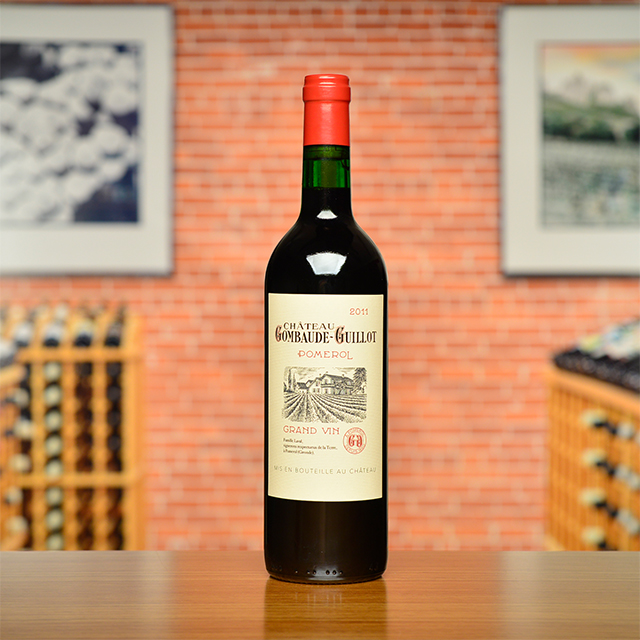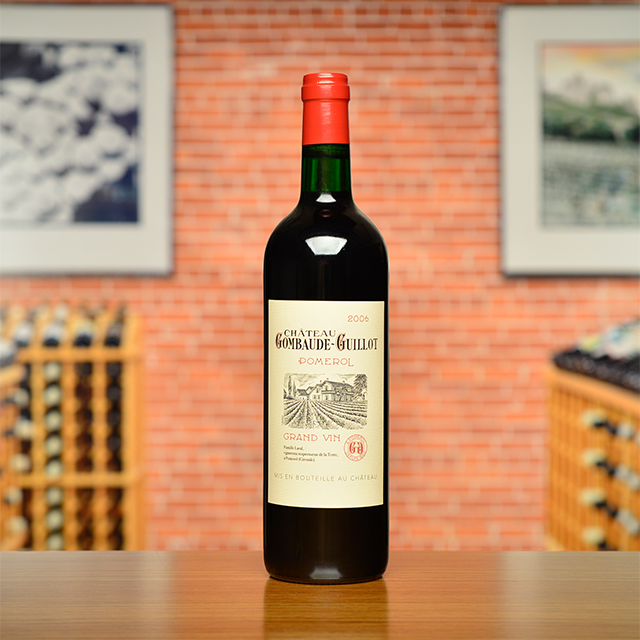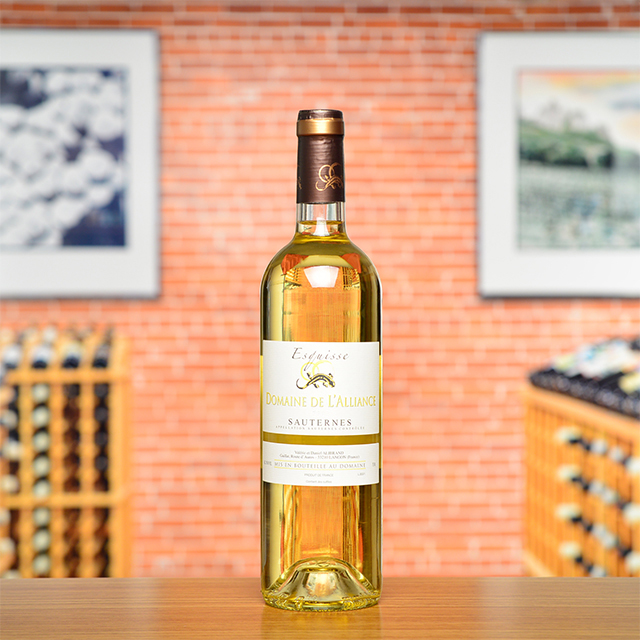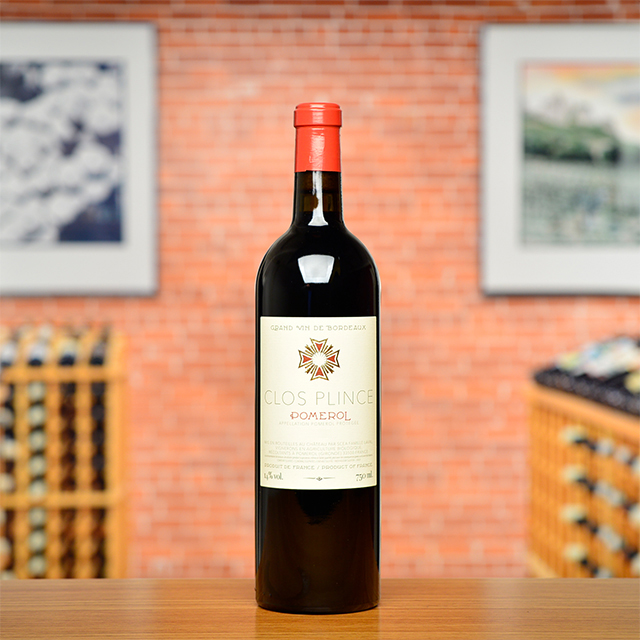Notify me
2011 Pomerol
Château Gombaude-Guillot
Bordeaux’s Right Bank is a fairy-tale land of splendid châteaux, picturesque Roman villages, and perfectly manicured vineyards stretching as far as the eye can see. Prestige permeates the air around Saint-Émilion and Pomerol, where many of the world’s most illustrious estates neighbor one another on some of France’s most prized real estate.
In the middle of all this sits Château Gombaude-Guillot. More rustic farmhouse than château, Gombaude symbolizes a revolutionary approach to fine Bordeaux: a small family domaine run by humble farmers who have pioneered biodynamic viticulture and natural winemaking techniques.
This 2011, sourced straight from the Château, is everything you would expect from an aged Bordeaux of this pedigree. At a perfect stage of its evolution, it offers a striking aroma of sweet spice, woodsmoke, earth, and enduring notes of dark Merlot fruit. Rich, full, and saturated with savory pungency, the palate delivers depth and classic structure with a velvety touch before a long, satisfying finish. Dive into this mature Pomerol today for a farmer’s interpretation of Bordeaux!
—Anthony Lynch
| Vintage: | 2011 |
| Bottle Size: | 750mL |
| Blend: | 85% Merlot, 15% Cabernet Franc |
| Appellation: | Pomerol |
| Country: | France |
| Region: | Bordeaux |
| Producer: | Château Gombaude-Guillot |
| Winemaker: | Olivier Techer |
| Vineyard: | 40 years, 7 ha |
| Soil: | Flint, Clay |
| Aging: | Wine is aged in Allier oak barrels, 50% of which are new, although the proportion of new oak varies according to the vintage |
| Farming: | Organic (certified) |
| Alcohol: | 13.5% |
More from this Producer or Region

2006 Pomerol
France | Bordeaux
**Extremely limited quantities, maximum three bottles per purchase.**

2011 Pomerol MAGNUM
France | Bordeaux
With incredible depth, power, and fine but grippingly youthful tannins, this is unmistakably Pomerol.

2019 Lalande-de-Pomerol
France | Bordeaux
Made from mostly Merlot and a splash of Cabernet Franc, this velvety rouge is approachable now despite having years of beautiful life ahead.

2012 Pomerol
France | Bordeaux
** New Wine Added ** Extremely limited quantities, maximum three bottles per purchase.

2023 Sauternes “Esquisse”
France | Bordeaux
This refreshing dessert wine is versatile at table—it works wonders as an apéritif or with cheeses—and can still be cellared for several years.

2019 Pomerol “Clos Plince”
France | Bordeaux
This is the perfect example of a fine, elegant version of Merlot.

2016 Canon-Fronsac
France | Bordeaux
Divine with lemon and rosemary roasted lamb.

2020 Canon Fronsac
France | Bordeaux
You may find it to be leaner and livelier than the rich, plush Merlots of Pomerol and Saint Emilion

2021 Bordeaux Sec “Les Clous”
France | Bordeaux
A nervy, age-worthy wine; it smells remarkably like top-notch Chablis, but on the palate hints at cool and tropical fruits like melon, lychee, and lime.

2017 Pomerol
France | Bordeaux
The incredible depth, power, and fine but grippingly youthful tannins are text-book Pomerol
About The Producer
Château Gombaude-Guillot
About The Region
Bordeaux

Often considered the wine capital of the world, Bordeaux and its wines have captured the minds, hearts, and wallets of wine drinkers for centuries. For many, the wines provide an inalienable benchmark against which all other wines are measured.
Bordeaux is divided into three winegrowing regions with the city that gives the region its name in the near geographical center. The “right bank,” or the area located east of the Dordogne River, produces wines that are predominantly Merlot with small amounts of Cabernet Franc and Cabernet Sauvignon. The “left bank” is located to the west of the Garonne River and produces wines dominated by Cabernet Sauvignon, with Cabernet Franc, Merlot, Malbec and Petit Verdot.
The third region, Entre-Deux-Mers, lies between both rivers and produces white wines from Sauvignon Blanc, Sémillon, and Muscadelle. Though technically in the left bank, it is worth noting the appellation of Sauternes, which produces arguably the world’s most famous sweet wines from Sauvignon Blanc, Sémillon, and Muscadelle as well.
Though many top Bordeaux wines are sold en primeur (in advance of their bottling) and often through a middleman known as a negoçiant, Kermit has always preferred to purchase directly from the winemaker. For more than three decades he has sought out small producers, who make classic Bordeaux wines and are willing to play outside the negoçiant system. This ethic has led to longstanding relationships, excellent prices, and perhaps most important—wines of great value and longevity.
More from Bordeaux or France
2023 Saint-Emilion Grand Cru
Château Tertre de la Mouleyre France | Bordeaux
1986 Saint-Julien
Château Gruaud Larose France | Bordeaux
2024 Graves Blanc HALF BOTTLE
Château Graville-Lacoste France | Bordeaux
2020 Canon Fronsac
Château Moulin France | Bordeaux
2024 Graves Blanc
Château Graville-Lacoste France | Bordeaux
2023 Sauternes “Esquisse”
Domaine de l'Alliance France | Bordeaux
2019 Fronsac
Château Haut-Lariveau France | Bordeaux
2024 Bordeaux Blanc
Château Ducasse France | Bordeaux
2022 Bordeaux Sec “Les Clous”
Domaine de l’Alliance France | Bordeaux
2017 Pomerol
Château Gombaude-Guillot France | Bordeaux
2006 Pomerol
Château Gombaude-Guillot France | Bordeaux
2022 Sauternes
Domaine de l’Alliance France | Bordeaux
2023 Saint-Emilion Grand Cru
Château Tertre de la Mouleyre France | Bordeaux
1986 Saint-Julien
Château Gruaud Larose France | Bordeaux
2024 Graves Blanc HALF BOTTLE
Château Graville-Lacoste France | Bordeaux
2020 Canon Fronsac
Château Moulin France | Bordeaux
2024 Graves Blanc
Château Graville-Lacoste France | Bordeaux
2023 Sauternes “Esquisse”
Domaine de l'Alliance France | Bordeaux
2019 Fronsac
Château Haut-Lariveau France | Bordeaux
2024 Bordeaux Blanc
Château Ducasse France | Bordeaux
2022 Bordeaux Sec “Les Clous”
Domaine de l’Alliance France | Bordeaux
2017 Pomerol
Château Gombaude-Guillot France | Bordeaux
2006 Pomerol
Château Gombaude-Guillot France | Bordeaux
2022 Sauternes
Domaine de l’Alliance France | Bordeaux
Kermit once said...

Kermit once said...
Let the brett nerds retire into protective bubbles, and whenever they thirst for wine it can be passed in to them through a sterile filter. Those of us on the outside can continue to enjoy complex, natural, living wines.
Inspiring Thirst, page 236

















